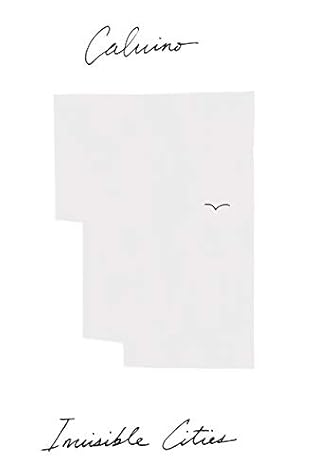More on this book
Community
Kindle Notes & Highlights
The city does not consist of this, but of relationships between the measurements of its space and the events of its past:
Memory is redundant: it repeats signs so that the city can begin to exist.
The Great Khan deciphered the signs, but the connection between them and the places visited remained uncertain; he never knew whether Marco wished to enact an adventure that had befallen him on his journey, an exploit of the city’s founder, the prophecy of an astrologer, a rebus or a charade to indicate a name. But, obscure or obvious as it might be, everything Marco displayed had the power of emblems, which, once seen, cannot be forgotten or confused.
each piece of information about a place recalled to the emperor’s mind that first gesture or object with which Marco had designated the place. The new fact received a meaning from that emblem and also added to the emblem a new meaning.
sometimes different cities follow one another on the same site and under the same name, born and dying without knowing one another, without communication among themselves. At times even the names of the inhabitants remain the same, and their voices’ accent, and also the features of the faces; but the gods who live beneath names and above places have gone off without a word and outsiders have settled in their place.
it is pointless trying to decide whether Zenobia is to be classified among happy cities or among the unhappy. It makes no sense to divide cities into these two species, but rather into another two: those that through the years and the changes continue to give their form to desires, and those in which desires either erase the city or are erased by it.
From one part to the other, the city seems to continue, in perspective, multiplying its repertory of images: but instead it has no thickness, it consists only of a face and an obverse, like a sheet of paper, with a figure on either side, which can neither be separated nor look at each other.
For those who pass it without entering, the city is one thing; it is another for those who are trapped by it and never leave. There is the city where you arrive for the first time; and there is another city which you leave never to return. Each deserves a different name; perhaps I have already spoken of Irene under other names; perhaps I have spoken only of Irene.
in the seed of the city of the just, a malignant seed is hidden, in its turn: the certainty and pride of being in the right—and of being more just than many others who call themselves more just than the just. This seed ferments in bitterness, rivalry, resentment; and the natural desire of revenge on the unjust is colored by a yearning to be in their place and to act as they do. Another unjust city, though different from the first, is digging out its space within the double sheath of the unjust and just Berenices.
“The inferno of the living is not something that will be; if there is one, it is what is already here, the inferno where we live every day, that we form by being together. There are two ways to escape suffering it. The first is easy for many: accept the inferno and become such a part of it that you can no longer see it. The second is risky and demands constant vigilance and apprehension: seek and learn to recognize who and what, in the midst of the inferno, are not inferno, then make them endure, give them space.”


